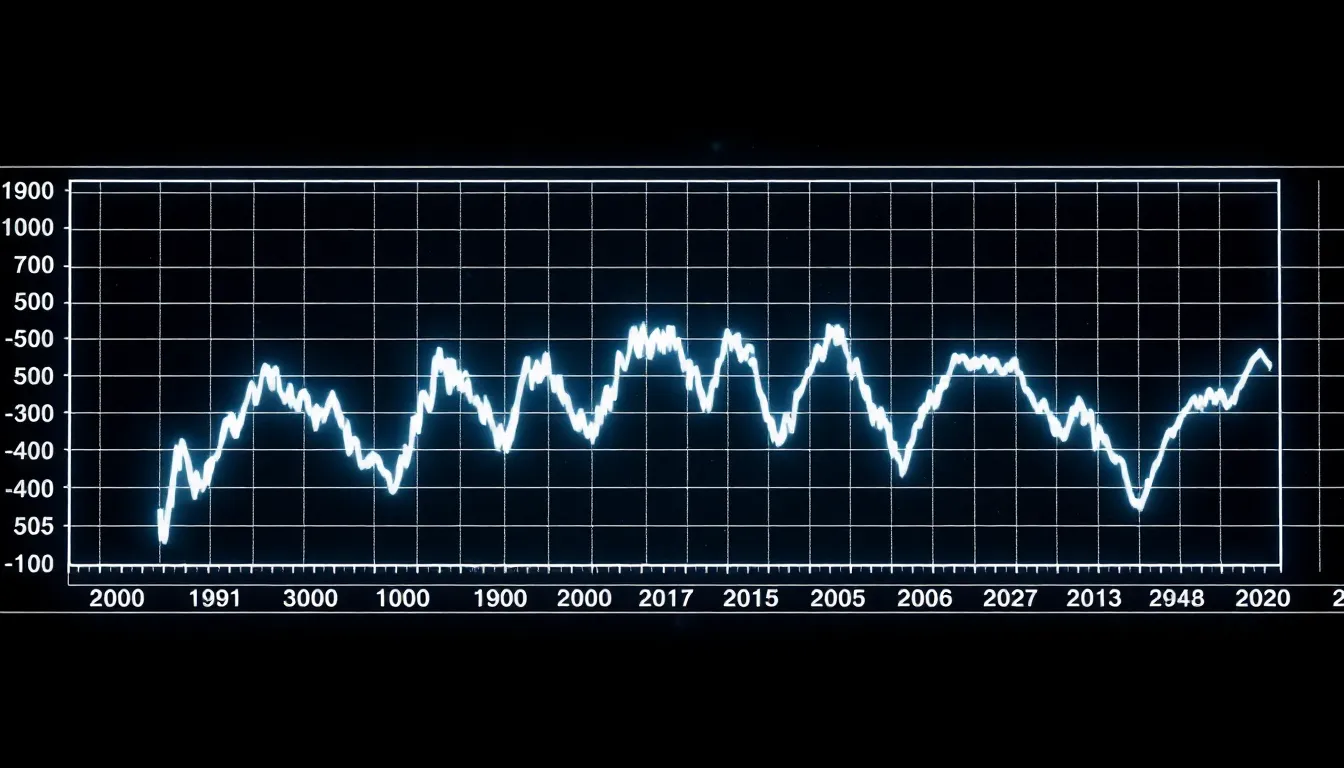The S&P 500 is like the rollercoaster of the stock market—full of ups, downs, and the occasional loop-de-loop that leaves investors breathless. Understanding its performance year by year is essential for anyone looking to navigate this thrilling ride. Whether you’re a seasoned investor or just dipping your toes into the financial waters, knowing how the S&P 500 has fared can help you make informed decisions and avoid those heart-stopping drops.
Table of Contents
ToggleOverview of S&P 500 Performance
S&P 500 performance shows significant yearly variations. Historical data reveals that some years experience notable gains, while others suffer declines. In 2021, for example, the index surged by 26.9%, reflecting strong economic recovery post-pandemic and robust corporate earnings. Conversely, in 2008, it plummeted by 37%, a direct consequence of the financial crisis that affected global markets.
Analyzing annual performance aids investors in recognizing trends and adjusting strategies accordingly. Yearly returns present a snapshot of market conditions and investor sentiment, illustrating how macroeconomic factors impact the index. Events like interest rate hikes or geopolitical tensions often trigger substantial effects on performance.
Many investors rely on annualized average returns for a comprehensive view of S&P 500 performance. Over the past 90 years, the average annual return stands around 10%, including dividends. This consistent growth highlights the index’s resilience over the long term.
Practicing patience proves essential for navigating S&P 500 fluctuations. Short-term volatility can cause uncertainty, yet historical data suggests that holding investments typically yields positive outcomes over extended periods. By understanding the yearly performance patterns, investors can position themselves better in the market.
Investors should also consider the impact of compounding on long-term investments. Reinvesting dividends can significantly enhance returns, building wealth steadily over time. Keeping an eye on yearly performance fosters more informed decision-making in various market conditions.
S&P 500 Performance by Year

Understanding yearly performance provides critical insight into the S&P 500’s volatility. Examining fluctuations aids investors in navigating market conditions effectively.
Year-by-Year Breakdown
The performance of the S&P 500 varies significantly each year. In 2021, the index gained 26.9%, driven by economic recovery and strong corporate earnings. Conversely, 2008 saw a sharp decline of 37%, reflecting the impact of the financial crisis. Other years like 2017 recorded a gain of 21.7%, while 2018 experienced a drop of 4.4%. Annual trends paint a clear picture of how different economic factors influence performance, making annual assessment crucial for strategic planning.
Notable Trends and Patterns
Trends in S&P 500 performance reveal essential patterns over time. Notably, years with strong economic growth often correlate with substantial gains. Historical patterns suggest that post-recession recoveries lead to impressive rebounds, as seen in 2009 after the 2008 downturn. A pattern of volatility underscores the importance of diversification and long-term investment strategies. Annualized average returns remain around 10%, emphasizing resilience in the index despite fluctuations. Such observations assist investors in making informed decisions, aligning their strategies with broader market trends.
Factors Influencing Performance
Understanding the factors influencing S&P 500 performance enhances investment decisions. Economic conditions and political events play pivotal roles in shaping market dynamics.
Economic Conditions
Economic indicators like GDP growth, unemployment rates, and inflation directly impact the S&P 500’s performance. Robust GDP growth often correlates with increased corporate profits, leading to higher stock prices. Unemployment rate fluctuations influence consumer spending; low unemployment typically boosts economic confidence and spending. Inflation poses additional challenges, as rising costs can diminish profit margins for companies. During periods of economic expansion, indexes tend to show gains, while recessions, such as in 2008, result in significant declines. Analyzing these indicators helps investors anticipate market shifts and adjust their strategies accordingly.
Political Events
Political events can cause immediate and lasting effects on the S&P 500. Legislative changes, such as tax reforms or trade agreements, significantly impact business environments and investor sentiment. Uncertainty surrounding elections or geopolitical tensions can lead to market volatility, as investors react to potential policy changes. For instance, major tax cuts in 2017 spurred a notable increase in corporate profits, contributing to the S&P 500’s gains that year. Monitoring these events is crucial for recognizing trends and preparing for potential market fluctuations.
Comparison with Other Indexes
The S&P 500 often serves as a benchmark for performance comparison with other major indexes. The Dow Jones Industrial Average, which includes only 30 large companies, shows how different methodologies can affect returns. Analysis of both indexes reveals that the S&P 500 generally exhibits greater volatility, experiencing larger percentage swings during market fluctuations.
Investors frequently look to the Nasdaq Composite for tech-centric performance insights. In years like 2021, the Nasdaq outperformed the S&P 500, achieving gains over 20%. Nevertheless, examining its past performance, the tech index has encountered sharper declines, providing a broader context for the S&P 500’s resilience during downturns.
Year-over-year comparisons reveal notable differences in annualized returns. The average annual return for the S&P 500, including dividends, stands around 10% over the last 90 years. Conversely, the performance of small-cap stocks, represented by the Russell 2000, can diverge significantly, particularly during economic recoveries when small-cap gains may exceed those of larger firms.
Data indicates that during economic recessions, the S&P 500 tends to recover faster than other indexes, highlighting its robust nature. Understanding these dynamics allows investors to make informed decisions based on historical performance trends. Additionally, the interplay between economic conditions and index performance emphasizes the need for diversified investment strategies.
Monitoring these indexes in tandem sheds light on broader market movements. The contrast between the S&P 500 and others illustrates how different sectors respond to economic cycles. Engaging with detailed performance data equips investors to capitalize on trends and navigate market shifts effectively.
The S&P 500 remains a vital barometer for investors navigating the complexities of the stock market. Its yearly performance highlights the importance of resilience and strategic planning. Understanding the index’s fluctuations equips investors to better manage their portfolios and capitalize on opportunities.
By recognizing the influence of economic indicators and geopolitical events, they can make informed decisions that align with their financial goals. The historical data underscores the value of patience and long-term investment strategies. Ultimately, staying attuned to annual performance trends fosters a proactive approach to investing, ensuring that individuals are prepared for whatever the market may bring.



